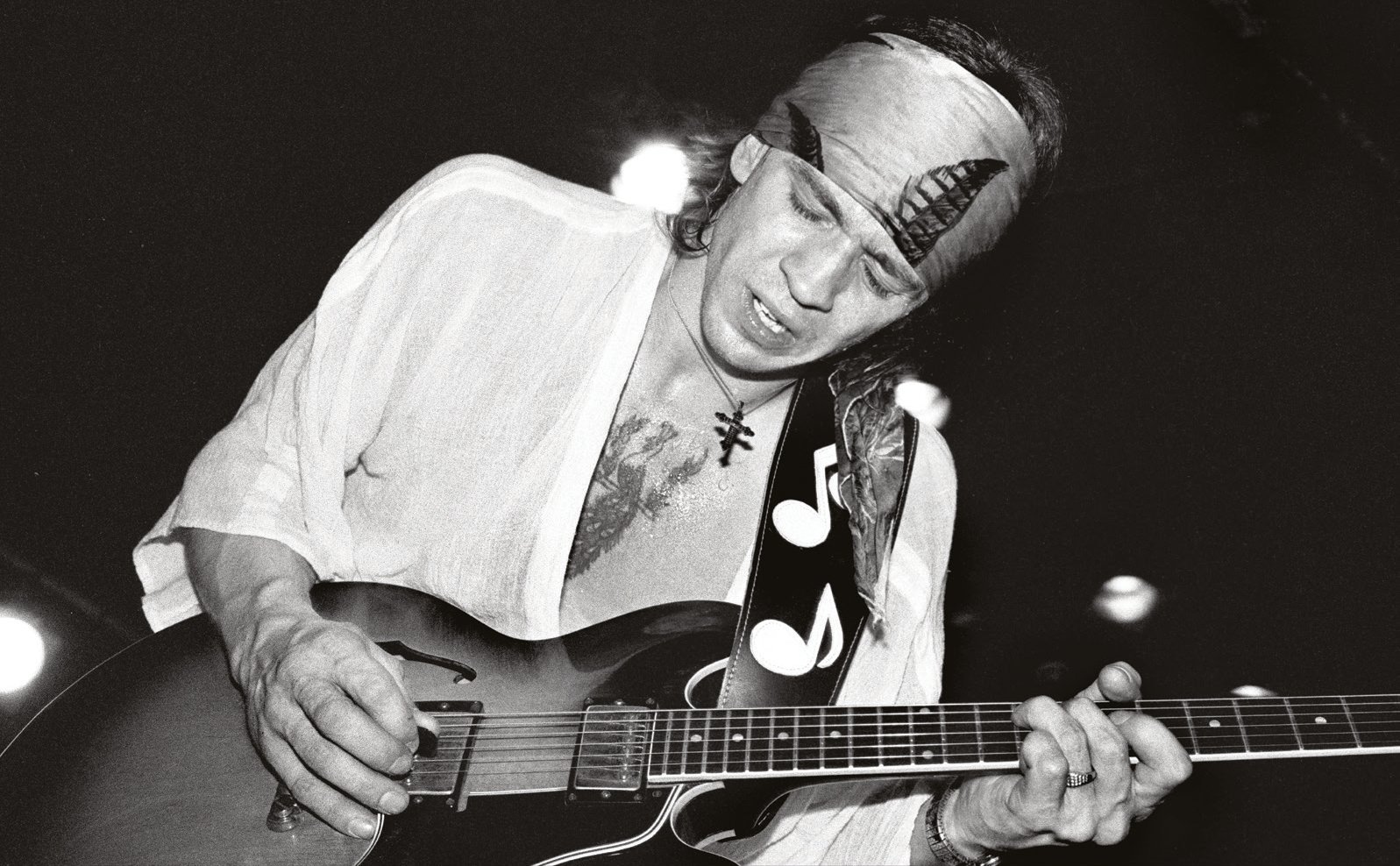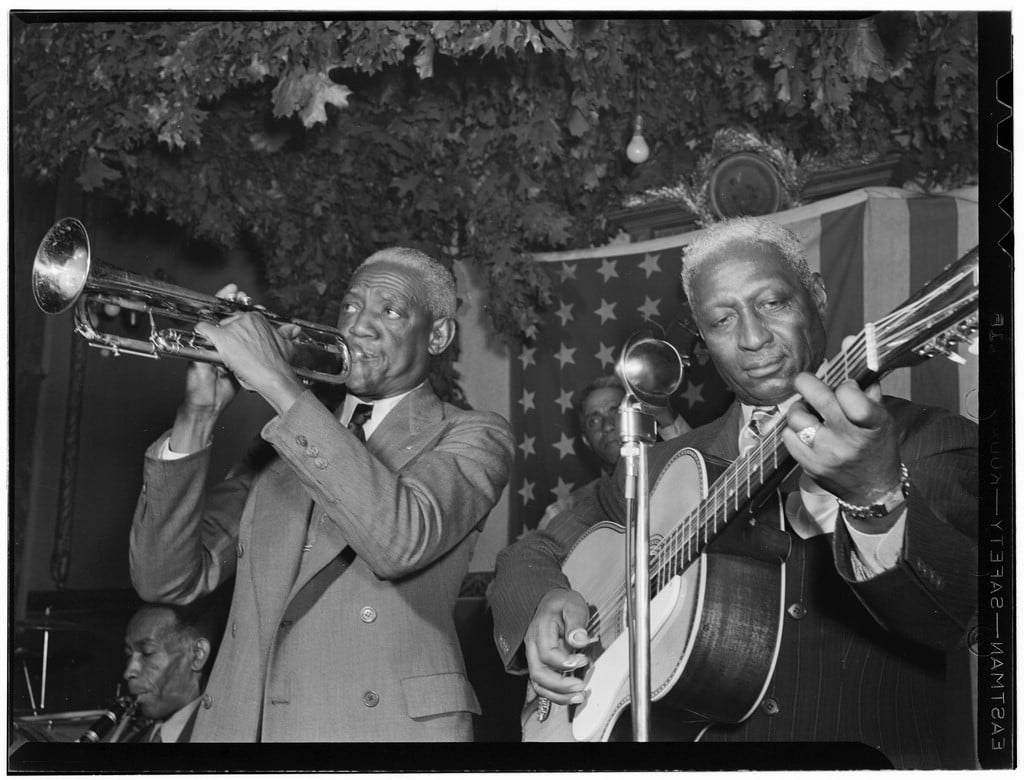
‘Texas Flood’ is a Soulful Portrait of Stevie Ray Vaughan
A new biography captures Vaughan’s journey from record-obsessed Dallas kid to all-time guitar god, taking care to convey what made his music transcendent.
Above: Stevie Ray Vaughan at the Texas Flood album release show in 1983.
Texas Flood: The Inside Story of Stevie Ray Ray Vaughan succeeds in just the way it must to reach both Vaughan’s fans and those first learning why he’s a shoo-in for a Mount Rushmore of Texas music. By collecting the voices of those who were there, authors Alan Paul and Andy Aledort get as close as possible to Vaughan’s journey from record-obsessed Dallas kid to all-time guitar god, taking care to convey what made his music transcendent. And they make fresh the profound tragedy of his sudden loss at age 35—no easy feat in 2019, when Vaughan has been dead almost as long as he was alive.

By Alan Paul and Andy Aledort
St. Martin’s Press
$29.99; 368 pages
Paul and Aledort are well-suited to write the behind-the-legend story. Both are veteran music journalists who followed Vaughan for decades; Aledort interviewed him four times. The authors’ conversations with those closest to Vaughan form the book’s foundation, with so many firsthand accounts of Vaughan’s life that a cast-of-characters list comes in handy. Stevie Ray’s brother, Jimmie Vaughan, and the bassist in Double Trouble, Tommy Shannon, bless the book with an epilogue and afterword, respectively. (The book’s only standout absence is Lenora “Lenny” Bailey Vaughan, who was married to Stevie Ray from 1979 to 1988 and died in 2018.)
Jimmie’s involvement signals just how much of an inside story the book truly is. Insight into Stevie Ray’s life and development would have been impossible without a first-person account of the brothers’ relationship. They were steeped in music since childhood—a pair of uncles were avid amateur guitarists, and some of Bob Wills’ Texas Playboys hung out in their Dallas home—and the brothers got their first guitars when Jimmie was 10 and Stevie Ray was 7. From then until Stevie Ray’s death, whether they liked it or not, they were bound together as guitarists, combining support with competition as only siblings can. Jimmie succeeded first as a guitar prodigy, pursuing purist blues and eventually forming the Fabulous Thunderbirds. Stevie Ray proved more open to experimentation, embracing diverse influences such as Jimi Hendrix. In the end the Vaughans found their way back to each other: Family Style, their 1990 collaborative album, was Stevie Ray’s last.
The book’s edited oral history format includes various voices compiled into chains of choice quotes that together move the narrative forward. The interspersed historical photographs create an effect akin to watching an interview-based television documentary. The combination works, creating a conversational, intimate tone that avoids any stuffiness the word “biography” may bring to mind. A simple chronological structure, beginning with the 1950 marriage of Vaughan’s parents, also helps make the book easy to read.
For those familiar with Vaughan as icon, the book at times resembles a superhero origin story. We witness how he learned or wrote signature songs; found Number One, his favorite guitar; and began wearing his trademark hat and Hendrix-inspired clothes. The recording of Texas Flood, the seminal album Double Trouble thought was just a demo, is depicted as a lightning-in-a-bottle sort of miracle. And for guitar geeks, an appendix details every instrument, pick, pedal, and amp Stevie Ray used.
Vaughan fueled his intensity with amphetamine and later cocaine, staying awake for days, ranting and muttering, never letting go of his guitar.
Before he reached icon status, though, there was a long period of growth out of Jimmie’s shadow and onto center stage, a process accelerated by a move from Dallas to Austin in 1972. At this point there’s plenty to please those nostalgic for “Old Austin,” where the city’s reputation as a live music mecca began. In bands called the Nightcrawlers and the Cobras—and eventually in the Triple Threat Revue, which became Double Trouble—Vaughan impressed audiences with his loud brand of rock-infused blues at venues such as Armadillo World Headquarters, Soap Creek Saloon, and especially Antone’s on Sixth Street. The Fabulous Thunderbirds would become the club’s house band, and at Antone’s Stevie Ray often sat in with his heroes, such as guitarist Albert King.
The book doesn’t shy away from the dark side of Vaughan’s rise: an appetite for drugs and alcohol as ravenous as his passion for music. He fueled his intensity with amphetamine and later—under Lenny’s influence, those who disliked her attest—cocaine, staying awake for days, ranting and muttering, never letting go of his guitar. In 1986, his substance abuse would culminate in a rock-bottom, near-death moment while on tour in Germany, which was followed by a determination to change.
Sobriety and a new romantic relationship brought unprecedented joy to the last few years of Vaughan’s life, as well as a new level of musical skill described with awe by those who witnessed it. He recorded what Austin City Limits producer Terry Lickona has called the series’ best performance, as well as Family Style and the recovery-themed album In Step.
The future looked as bright as it could be, and then there was no future. Those who lived through it up close describe the musician’s 1990 death in a helicopter crash with all the shock and hollowing grief as if it had happened 30 minutes ago, not 30 years. “His death changed my whole view of the world,” Shannon told the authors.
There is much more in the book’s 300-plus pages—catalogs of the musical influences on the Vaughan brothers, details of Stevie Ray’s management and finances, road stories from early tours, the drama of his relationship with David Bowie—but its heart is his absence, and its accomplishment is that it causes us to feel the full weight of his loss. In that, the book is its own kind of blues: stirring, cathartic, and real.
READ MORE:
-
Get Your Norteño out of My Conjunto: Everything is going fine until Lupe Saenz sees the CDs.
-
The Encyclopedic ‘Country Music USA’ Tells (Almost) the Whole Story: Laird does a masterful job of showing how, for many performers, the whole question of authenticity has become ridiculous.
-
Big Music, Small Label: Going big is what a punk band does to rebel against a system that’s shrinking.


